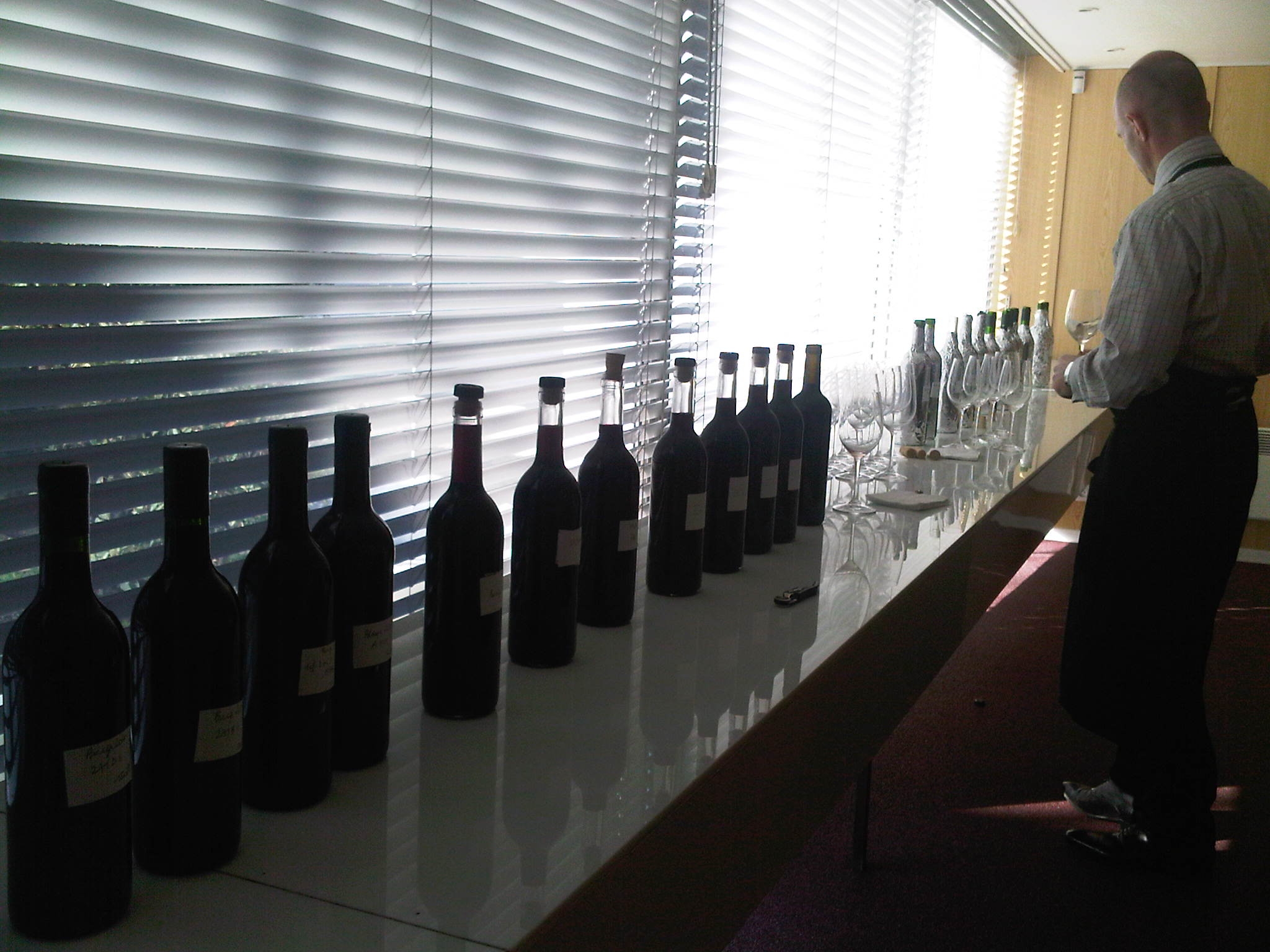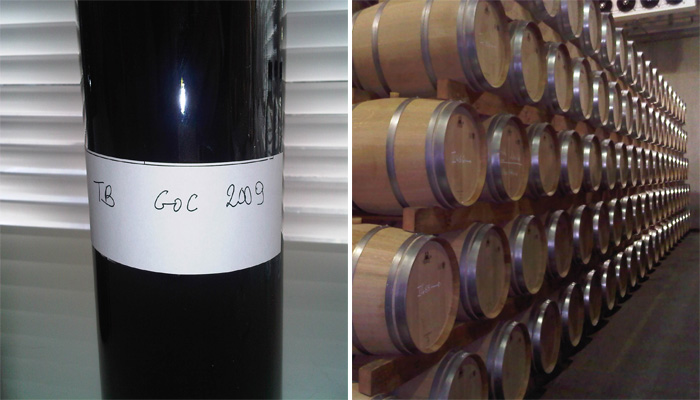Choosing the blend for our Good Ordinary Selection
Author: Max Lalondrelle
My role as a fine wine buyer is mostly to source the best parcels of the rarest and most exclusive wines the world has to offer. But I also relish the opportunity to participate in the elaboration of our Berrys’ Own Selection wines: it is a very different, exciting and humbling experience. The most important point here is not the brand but the juice and how to make the best possible wine that would appeal to the largest audience at fantastic value. It has to be a Bordeaux in style but it also has to be ready to drink. It has to be round and generous to please the everyday drinker but with a bit of intellect and refinement for those in search of something more classic.
My colleague Simon Lubawy (who looks after the logistics side of Good Ordinary Claret) and I arrived at the very impressive Dourthe facility. Once inside we were lead to the tasting room through one of the most amazing and high-tech wine facilities in Bordeaux, where thousands of bottles on conveyor belt were whizzing in all directions with amazing robots handling very fragile bottles in a very delicate and choreographed way.
In the tasting room on the other hand, there was nothing high-tech, just a selection of samples, a measuring jug and a few good palates and noses… the old-fashioned way! The Master Blender had already narrowed down the selection from over 80 potential component parts of the blends to 12 reds and 12 whites. The rest is like cooking, each component is not usually very nice on its own but most have something to give to the final blend.
We started with the whites, which I always find to be much easier. They are usually much more aromatic than the reds and it is therefore easier to understand each individual style. We opted for a fresh but exciting approach, with bags of freshness from some Sauvignon Blanc vineyards in the northern part of Bordeaux. In the mid palate we wanted to add some flesh to move away from a New Zealand Sauvignon style and to keep it in line with a typical Bordeaux Blanc. This was achieved by adding a proportion of “non-overripe” Sémillon to the blend. On the finish we added some more Sauvignon Blanc but this time with a bit more ripeness and tannins to give the wine a bit of a grip on the back of the palate and a long and fresh finish.
The red was a bit more complicated. The Master Blender made up a few blends for us in order to pinpoint the style we wanted. A blend with a big dollop of Merlot and a touch of oak was selected as the matrix for the wine. We then added some fantastic Petit Verdot (which was so good it could have been drunk on its own) for the backbone structure and a blend of fantastic and almost minty Cabernet for a fresh but serious finish. We compared the final blend with the current vintage of GOC to make sure we had kept true to the style. The samples were then assembled from the selection and posted to us to try at BBR HQ. The final decision will be made over the next few weeks and the 1st shipment of the whites will be with us in May while the reds will land in early autumn. I am very proud of our Berrys’ Own Selection range and all the buyers here take great care in selecting only the best examples from around the world. Our Own Selection Wines are very often thefirst step into our wine list for customers, and so we must be absolutely certain that anything bearing our name must adhere to the same rigorous standards that we as a company apply to every aspect of our business. I’m delighted to say that our newest additions are very much in keeping with what we at Berrys hold dear.
To find out about our latest 2009 vintage, widely regarded as our finest ever, please visit our website.





I thought that you sourced your good ordinary from Dourthe? Was this a blending session at Dourthe for the No 1? I did a similar thing there a couple of years ago. Eye opening.